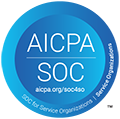For those of us who deal with MSAs, it’s all too common to see claims at settlement time that started out as basic and simple, then spiraled downward as a result of bad prescribing habits, increased drug use and opioid addiction. We hope for a different ending, but can miracles really happen?
Background
In late 2015, Tower completed a pharmacy project for a small employer in California. In the course of the project, drug triggers were identified, physicians were contacted and claimants were challenged to settle or make changes in treatment. As you might imagine, many of the physicians fought the request for change. But through perseverance, and working in tandem with the client, we pushed forward.
The Story as Shared by our Client
Dear Hany,
A few weeks ago, I was looking over the case for one of the California claimants and wanted to share the amazing results we have achieved with this gentleman.
This case involved a 26 year old man at time of injury. He sustained a minor back injury but was taking Hydrocodone, Testosterone, Celecoxib, Lyrica, Nortriptyline, Methocarbamol, and FENTANYL. With the recommendations and assistance from the Tower MSA Partners team, as well as support from his wife, we were able to get him into a new treating physician who agreed with our goal. He was weaned off of the Fentanyl, Methocarbamol, testosterone, hydrocodone, and Celecoxib. He has even started an exercise program. He is now both proud and happy to report how well he is doing.
The injured worker is now 51 years old and he sadly notes that he missed out on 25 years of his life and his children’s lives because he was so “drugged”. On a positive note, however, his new treating physician has been wonderful to work with and we see only good things for this claimant.
On the financial side we have now realized a reduction in the monthly Rx spend from $1,200 per month down to $600. The injured worker is now only taking Nortriptyline, Lyrica and Celebrex and we expect to reduce reserves next year and approach him for a settlement in June, 2018. None of this would have been possible if not for the Rx project and your team’s expertise, guidance and follow up assistance.
While we have had great success with many of the claims that we partnered on, this particular claim was really about improving his quality of life. So please share my THANK YOU and gratitude with your team. Let them know that what they do can save a life and that is priceless.
It’s True….Miracles Can Happen in Workers’ Compensation
What a wonderful way to end the day and begin our holiday celebrations!
From all of us at Tower MSA Partners, our best wishes for a wonderful holiday, and a safe and prosperous 2017!








